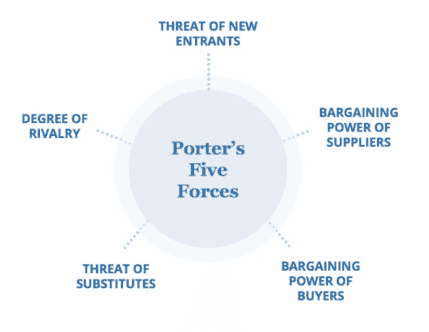How to Leverage Podcasting in Your Marketing
Podcasting has been around for a while, but it hit its stride as a viable channel for brands within the past year or so. This has prompted many...

Grasping the extent of your competition may appear to be a straightforward task.
For instance, it's evident that Pepsi's Aquafina competes with Coca-Cola's Dasani, and Sony's PlayStation is a rival to Microsoft's Xbox. However, the scope of a company's competition is often more extensive and intricate than it seems.
Emerging competitors, new technologies, or shifts in consumer behavior can be more threatening than established competitors in the market.
To gain a complete understanding of your brand's competitive landscape, you need to analyze it from both industry and market perspectives.
Within an industry, competitors offer similar products or services to the same target audience, which is relatively simple.
However, examining competition from a market standpoint helps identify competitors satisfying the same customer needs, irrespective of the industry.
For instance, if your car breaks down and you need a new one, your competitive options might include Ford, Chevy, BMW, and others.
But if you live and work in a city, other transportation alternatives like public transit, Lyft, Uber, or bike-sharing services might be more suitable for your specific needs.
By considering the market as a whole, you can uncover a more extensive array of actual and potential competitors.
Creating customer journey maps is an excellent method for identifying market competitors, as these maps expose direct and indirect threats at each stage of the buyer's journey, from research to acquisition to product or service usage.
Michael Porter's Five Forces is a helpful framework for understanding the range of competitive threats along your target audience's consumer journey.
 Porter's model proposes that five key forces determine a market's competitive intensity.
Porter's model proposes that five key forces determine a market's competitive intensity.
Gaining insight into your brand's position within this framework can help identify strengths, address weaknesses, and avoid strategic and marketing errors.
The five forces pose the following threats:
Understanding your competitors involves more than just identifying the obvious players within your industry.
A comprehensive approach that considers both industry and market perspectives is essential for recognizing the full spectrum of competitive threats.
By gaining a deeper understanding of your competitive landscape and the forces that shape it, you can develop effective strategies to strengthen your brand, address weaknesses, and maintain a competitive edge in an ever-changing environment.
Sign up for our monthly newsletter to receive updates.

Podcasting has been around for a while, but it hit its stride as a viable channel for brands within the past year or so. This has prompted many...

A brand redesign can breathe new life into your business, attract new customers, and give your brand a fresh and modern look. However, it's crucial...
In a world flooded with advertisements and promotions, it's not enough to simply showcase your product or service to attract sales.Product research,...